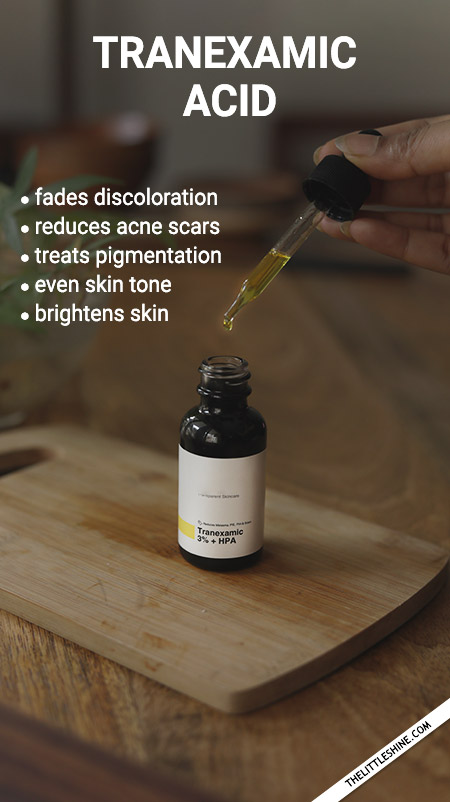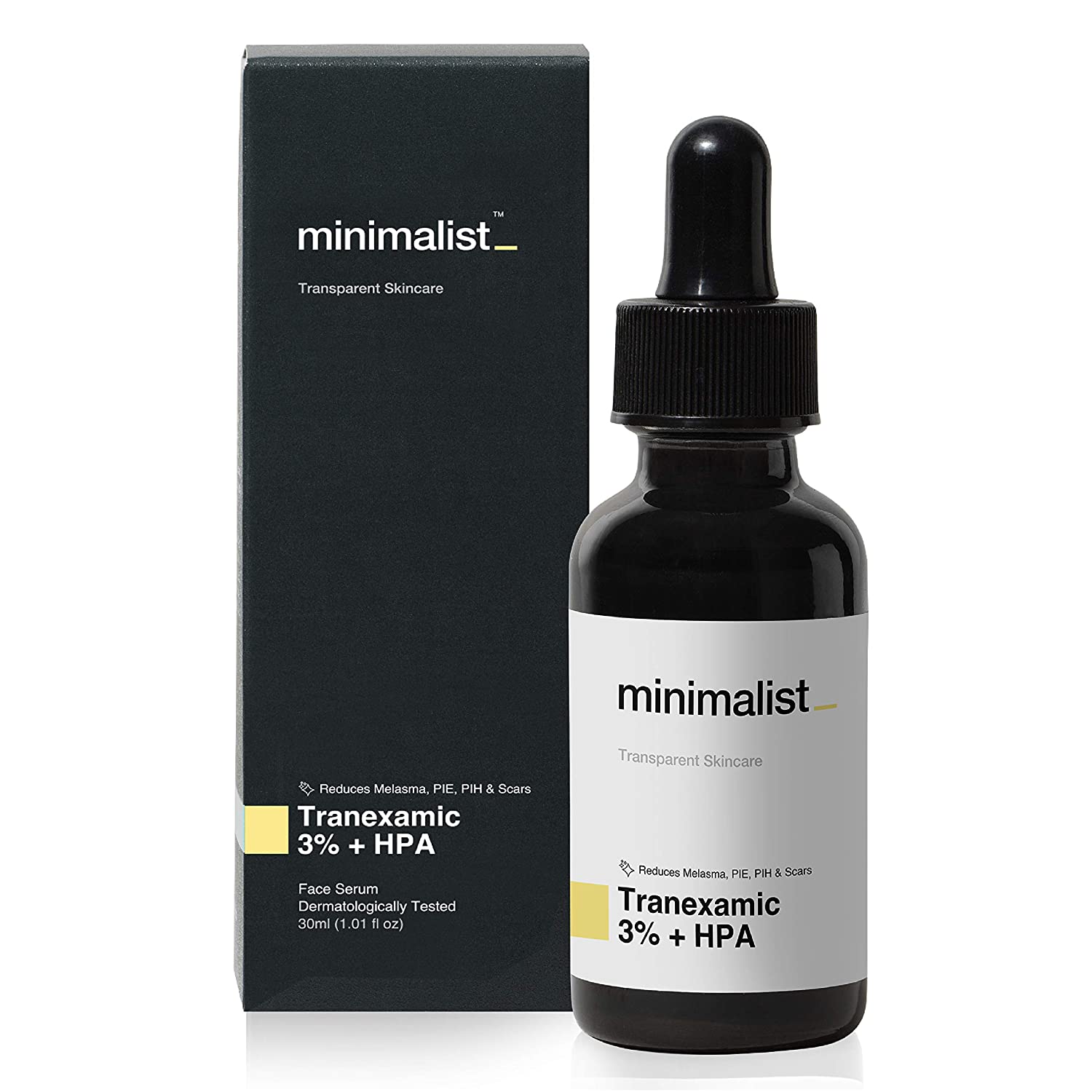Skin discoloration or the appearance of dark spots on the skin can be worrisome to many and people often try various methods of treatment to get rid of them. While some of them may work, some don’t and it can be quite a disappointment, right?

Well, how about trying out the so called “skin brightening powerhouse” – Tranexamic Acid and say goodbye to those dark spots!
So if you are one of those people with melasma or hyperpigmentation, then this one’s the perfect read for you. So go ahead and do not skip to the end.
What is Tranexamic Acid?
Well, if you’re one of those people who have heard of this one before, you might have a few doubts about how it can be used for the skin, when tranexamic acid (also known as Txa) was originally a medication that was used to control excessive bleeding. So yes, if you knew about this, you are right!
Tranexamic acid was originally developed in 1979 as a medication to treat excessive blood loss that occur from surgeries, childbirth, excessive bleeding in menstruating women etc. During some of these medical trials, the benefit of tranexamic acid for skin lightening was discovered, through an accidental observance of a patient with skin discoloration, who was on tranexamic acid for the treatment of hives.
Who can use Tranexamic Acid and what are its benefits?
Tranexamic acid can be used for people with skin discoloration issues like –
- Hyperpigmentation: A skin condition similar to melasma, where there body produces excess melanin (a natural skin pigment), that causes dark patches to appear on the skin.
- Melasma: Melasma is a skin condition that causes the skin to develop dark spots or dark patches that discolour the skin, caused by hormonal changes within the body. It is a type of hyperpigmentation.
When the skin with dark spots or dark patches come in contact with the ultra-violet (UV) rays of the sun, the production of melanin gets activated and increases. Tranexamic acid helps to inhibit this melanin production as it can help inhibit the interaction between the skin cells (keratinocytes) and melanocytes (the cells that produce the melanin in the body).
Tranexamic acid is known to work well with most skin types and has shown good results over the years of its usage. It can also be combined with other skin care ingredients like topical retinoids, vitamin C, kojic acid etc for the best effects.
It can not only prevent further formation of dark sports or dark patches, but it can also help in the reduction of already existing discoloured patches caused by melasma or hyperpigmentation. READ MORE – Magic Potion For Hair Growth, brighten Skin and more

How to use tranexamic acid for your facial dark patches?
Using tranexamic acid 2 to 3 times a week during your evening or night time skin care routine will be ideal. Avoid using your skin moisturizers along with the tranexamic acid.
Step 1: Cleansing your skin
This step is very essential in any sort of skin care routine, in order to get rid of any impurities on the skin like excess oil, dirt, sweat and product buildup. Use any mild cleanser of your choice to cleanse your face and then pat dry your face after cleansing it.
Tip: Cleansing your face with warm water can help open up the pores and unclog them more easily.
Step 2: Use a skin hydrator
Following this step before the application of the tranexamic acid, will be ideal. Use a pea-sized amount of a skin-hydrating product like hyaluronic acid, applying it evenly over your face. This will help keep the skin moisturized. Do not apply too much and make sure the skin has completely absorbed it before applying the tranexamic acid.
Step 3: Application of the tranexamic acid
Take a little tranexamic acid and apply it evenly all over the face. Do not over apply.
Caution: Do not apply this acid over your eyelids and be careful not to get it into your eyes. READ MORE – Squalane – the best oil for glowing skin
General caution:
- While it is known that tranexamic acid works well with most skin types, it is essential to consult a dermatologist before starting off with any treatment, to avoid the risk of any side effects, especially if you have sensitive skin.
- Doing a patch test before complete application is advisable, to check for any reactions.
